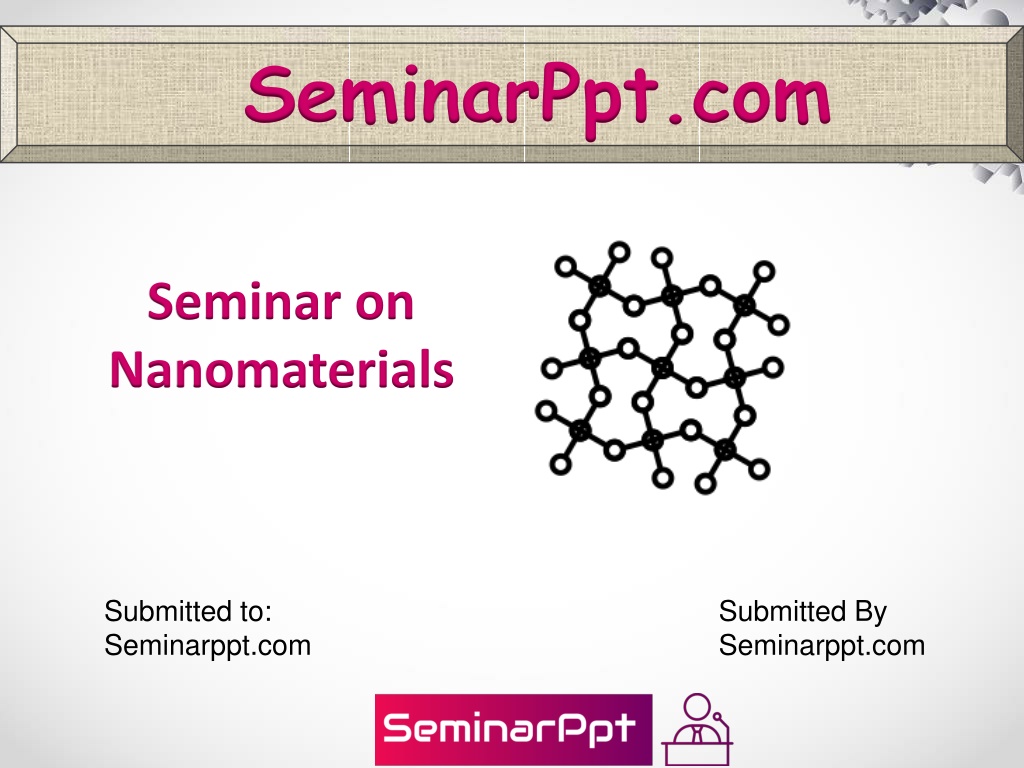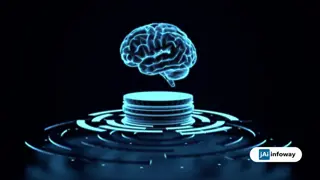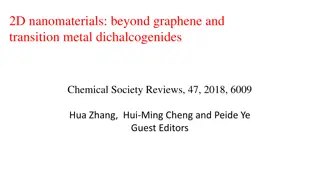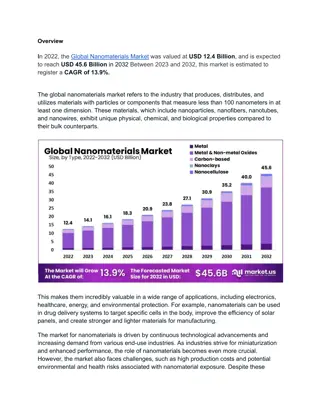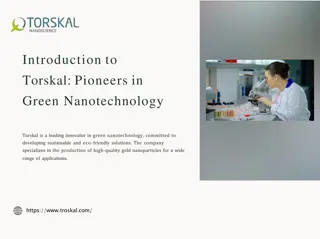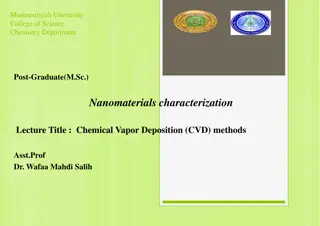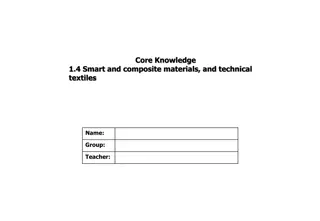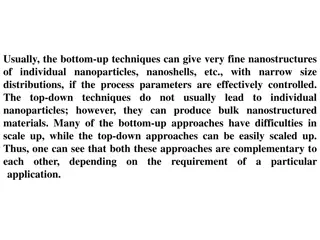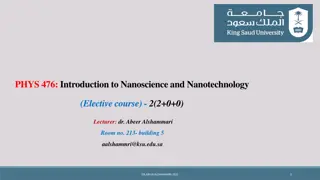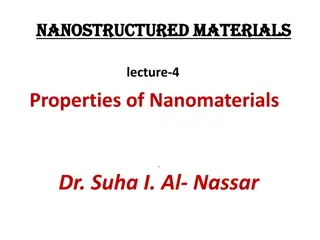Nanomaterials: Revolutionizing Technology
Nanomaterials represent a groundbreaking technological frontier, allowing for the manipulation of material properties at the molecular level with immense potential across various industries. This seminar delves into the definition, applications, properties, and future prospects of nanomaterials, showcasing their transformative impact on electronics, energy, biomedicine, and environmental sustainability.
Download Presentation

Please find below an Image/Link to download the presentation.
The content on the website is provided AS IS for your information and personal use only. It may not be sold, licensed, or shared on other websites without obtaining consent from the author.If you encounter any issues during the download, it is possible that the publisher has removed the file from their server.
You are allowed to download the files provided on this website for personal or commercial use, subject to the condition that they are used lawfully. All files are the property of their respective owners.
The content on the website is provided AS IS for your information and personal use only. It may not be sold, licensed, or shared on other websites without obtaining consent from the author.
E N D
Presentation Transcript
SeminarPpt.com Seminar on Nanomaterials Submitted to: Seminarppt.com Submitted By Seminarppt.com
Table Contents Definition Introduction Applications of Nanomaterials Properties of Nanomaterials Future of Nanomaterials Conclusion 2
Definition This technological branch manipulates the molecular structure of materials to change their intrinsic properties and obtain others with revolutionary applications. 3
Introduction This field, which flourished between the 60s and 80s, has surged in the last two decades with a booming global market whose value will exceed 125,000 million dollars in the next five years according to the Global Nanotechnology Market (by Component and Applications) report by Research & Markets which presents forecasts for 2024. 4
APPLICATIONS OF NANOMATERIALS Electronics Carbon nanotubes are close to replacing silicon as a material for making smaller, faster and more efficient microchips and devices, as well as lighter, more conductive and stronger quantum nanowires. Graphene's properties make it an ideal candidate for the development of flexible touchscreens. 6
APPLICATIONS OF NANOMATERIALS Energy A new semiconductor developed by Kyoto University makes it possible to manufacture solar panels that double the amount of sunlight converted into electricity. Nanotechnology also lowers costs, produces stronger and lighter wind turbines, improves fuel efficiency and, thanks to the thermal insulation of some nanocomponents, can save energy. 7
APPLICATIONS OF NANOTECHNOLGY Biomedicine The properties of some nanomaterials make them ideal for improving early diagnosis and treatment of neurodegenerative diseases or cancer. They are able to attack cancer cells selectively without harming other healthy cells. Some nanoparticles have also been used to enhance pharmaceutical products such as sunscreen. 8
APPLICATIONS OF NANOTECHNOLGY Environment Air purification with ions, wastewater purification with nanobubbles or nanofiltration systems for heavy metals are some of its environmentally-friendly applications. Nanocatalysts are also available to make chemical reactions more efficient and less polluting. 9
APPLICATIONS OF NANOTECHNOLGY Food In this field, nanobiosensors could be used to detect the presence of pathogens in food or nanocomposites to improve food production by increasing mechanical and thermal resistance and decreasing oxygen transfer in packaged products. 10
APPLICATIONS OF NANOMATERIALS Textile Nanotechnology makes it possible to develop smart fabrics that don't stain nor wrinkle, as well as stronger, lighter and more durable materials to make motorcycle helmets or sports equipment. 11
APPLICATIONS OF NANOMATERIALS Textile Nanotechnology makes it possible to develop smart fabrics that don't stain nor wrinkle, as well as stronger, lighter and more durable materials to make motorcycle helmets or sports equipment. 12
PROPERTIES NANOMATERIALS 13
FUTURE OF NANOMATERIALS However, the environmental, health and safety risks of nanotechnology and concerns related to its commercialisation could hamper market expansion. The United States, Brazil and Germany will lead the nanotechnology industry in 2024, with an important presence in the Top 15 Asian countries such as Japan, China, South Korea, India, Taiwan and Malaysia. 14
Conclusion The properties of some nanomaterials make them ideal for improving early diagnosis and treatment of neurodegenerative diseases or cancer. They are able to attack cancer cells selectively without harming other healthy cells. Some nanoparticles have also been used to enhance pharmaceutical products such as sunscreen. 15
References Wikipedia.org Google.com Seminarppt.com Studymafia.org
